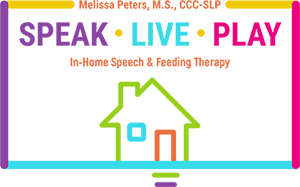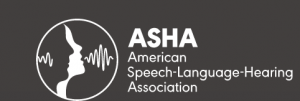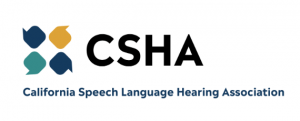What Is A Fluency Disorder?
Let’s explore the art of communication! Picture talking as if it were reading a captivating story, where the words effortlessly flow, much like a river gliding without any interruptions. This seamless flow of words is what we refer to as fluency in speech. Fluency encompasses how our words link together, the ease with which we express ourselves, and the pace at which we articulate.
However, there are times when this river of words encounters obstacles. When this occurs, we refer to it as a fluency disorder. One prevalent fluency disorder is known as stuttering, impacting approximately 1% of the United States population. Another variant is cluttering, which, though distinct, falls under the umbrella of fluency disorders. Let’s delve into these concepts further.
Stuttering disorder manifests as if your words encounter unexpected speed bumps. Individuals experiencing stuttering may find themselves repeating words or sounds, and their speech may exhibit sudden pauses or slower segments. It’s akin to navigating a conversation along a bumpy road. Imagine attempting to articulate a thought, only for the words to become entangled or disrupted, like a puzzle missing a crucial piece. Stuttering can present challenges for individuals expressing their ideas, even when their thoughts are exceptionally clear.
Now, let’s shift our focus to cluttering. Cluttering is characterized by the rapid or disorganized delivery of words, reminiscent of having too many cars on the road simultaneously! Those who clutter may speak rapidly, and their words might need more proper sequencing. Notably, cluttering extends beyond spoken communication, affecting writing and typing. It’s akin to narrating a story, but the words become jumbled in the process.
While stuttering and cluttering may initially appear similar in how they impact communication, they are distinct fluency disorders. Stuttering is comparable to encountering a road with bumps, impeding the smooth delivery of words. Conversely, cluttering can be likened to managing an excessive number of vehicles on the road, making it challenging to organize words neatly.
Recognizing these fluency disorders is crucial to extending assistance to those grappling with communication challenges. For stuttering it involves aiding individuals in smoothing out the bumps in their linguistic journey, facilitating a more fluid expression of thoughts. With cluttering, the focus is on assisting individuals in organizing their words, ensuring their communication remains clear and easily understood.
In summary, fluency disorders resemble diverse pathways, each with its distinct challenges. However, with the appropriate support and comprehension, we can transform these communication roads, making them smoother for everyone!
Understanding Childhood Stuttering: A Developmental Perspective
Contrary to common belief, childhood stuttering is a phenomenon that can align with normal development. Surprisingly, about 5% of children experience disfluency at some point during their developmental journey.
Typically, developmental stuttering unfolds between the ages of 2 and 6. Why is this the case? Well, during these formative years, children are rapidly acquiring and honing their language skills. It’s quite normal for them to repeat or elongate sounds and syllables or occasionally stumble over words as they navigate the intricacies of language acquisition.
Stuttering tends to make an appearance when a child:
- Gets excited
- Feels rushed when trying to speak
- Attempts to communicate rapidly
- Becomes notably fatigued
Understandably, parents may become concerned if their child begins to stutter. If your child’s stuttering or other disfluencies persist for more than six months, or if you observe accompanying physical symptoms like eye blinking, facial tension, or a tendency to look away, it may be prudent to schedule a speech and language evaluation.
It is crucial to monitor your child’s speech development diligently. Seeking professional guidance not only ensures a comprehensive understanding of their communication journey but also enhances their overall growth and development. Remember, developmental stuttering is a phase that many children pass through, but timely evaluation can provide valuable insights and support if needed.
Causes of Stuttering
There is no one cause for stuttering, though current research links it to genetics and brain differences. Children who stammer often have a member of their family who stammers, too. Studies also reveal that those who stutter may have certain differences in how their brains function during speech. Other risk factors include;
- Gender: Boys exhibit a higher likelihood of persistent stuttering compared to girls.
- Age: children who start stuttering from age 3 ½ and above have a high chance of continuing stuttering.
- Family recovery history: if your family has members who continue to stutter, the child will likely continue stuttering.
Symptoms of Stuttering
- Stuttering often starts between 2 and 6 years, and while most children will have normal periods of dysfluency, these do not last beyond six months. Any stuttering lasting beyond this period will require treatment. The main symptoms are;
- Repetitions of parts of words like ‘I n-n-n-need a drink.’
- Prolonging sounds’ sssssssweet.’
- Blocks or pauses mid-sentence ‘I am going (long pause) to school
- Repetitions of one syllable word like ‘go-go-go-go-home.’
When to see a doctor and treatment
If you suspect your child stutters, you should see a speech-language pathologist. Early intervention can help you reduce the chances that your child will continue stuttering. See a doctor in case of the following;
- A child’s stuttering goes beyond 6-12 months.
- Your child develops a stutter late, around 3 ½ years and above
- Have a family history of stuttering
- Increased stuttering frequency
- The child tenses up when stuttering
Stuttering Disorder Treatment
For children dealing with fluency disorders, such as stuttering, a critical step is a thorough fluency evaluation by a speech-language pathologist (SLP). This involves standardized assessments and discussions with parents or guardians to understand the frequency, duration, and social impacts of the child’s disfluencies.
After the evaluation, the therapist will discuss the findings and recommend whether scheduling regular sessions, either in-person or through flexible teletherapy, is suitable. These sessions involve tailored exercises and activities aimed at improving fluency, enhancing speech flow, reducing disruptions, and boosting overall communication skills. Strategies may include breathing exercises, speech pace adjustments, or targeted sound and word practice.
Consistent participation in these sessions is essential for your child to practice techniques and develop a more confident way of expressing themselves. The therapist continually assesses progress, adjusting the therapy plan as needed.
As a parent or guardian, your involvement is crucial. The therapist may guide you on implementing home strategies to reinforce your child’s learning during therapy. In conclusion, treating fluency disorders requires a collaborative effort among the speech-language pathologist, the child, and the parents or guardians. The goal is to create an individualized plan addressing your child’s specific needs, promoting enhanced fluency, and facilitating effective communication.
Exploring the Benefits of Teletherapy for Stuttering Disorder
Teletherapy, or online therapy, provides several advantages for both you and your child when addressing stuttering disorder. Here are the key benefits:
- Convenience: In the midst of busy schedules, teletherapy allows you to stay at home and schedule sessions at times convenient for your family.
- Tech Appeal: Many kids enjoy online interactions, making teletherapy motivating and engaging. Used correctly, technology becomes a valuable tool in treating fluency disorders.
- Comfort: Children with stuttering disorders may feel more at ease during virtual sessions compared to face-to-face interactions.
- Access to Specialized Therapists: Teletherapy ensures expanded access to highly specialized therapists, addressing the challenge of finding the right professional for your child.
Research indicates teletherapy’s effectiveness, with many families expressing a preference for it over in-person sessions. Our therapists utilize innovative digital methods, conducting standardized assessments to tailor goals for each child. For more information on our teletherapy services, click here.
Avail the convenience and effectiveness of Speak Live Play‘s teletherapy services for comprehensive and accessible stuttering disorder treatment.
Tips for Communicating with a Child Who Stutters
When talking with a child who stutters, try these tips:
- Speak slowly and calmly, using pauses. Be patient.
- Encourage the child to speak about topics they choose. Comment on what interests them.
- Create a relaxed atmosphere to make your child feel comfortable.
- Minimize interruptions and give your full attention.
- Don’t shy away from discussing stuttering if the child brings it up. Be open and ready to talk.
If you’re concerned about your child’s stuttering, reach out to Speak Live Play for assistance. We are here to help.



